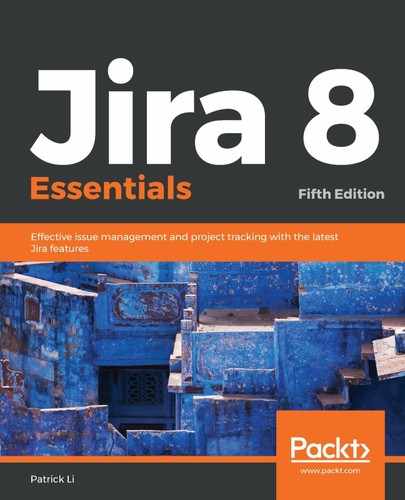As we saw in earlier sections, Jira's agile board lets you group similar issues together in horizontal rows called swimlanes. Unlike columns, which are mapped to workflow statuses, you can define swimlanes based on any criteria, including custom fields you have added yourself. To set up swimlanes for your board, you need to go through the following steps:
- Browse to your project's agile board.
- Click on the Board menu and select the Configure option.
- Select the Swimlanes option from the left navigation panel.
- Select how you want to define your swimlanes in the Base Swimlanes on field.
- If you choose the Queries option, you will need to define the query for each swimlane you want to add to the board.
There are six options to choose from when choosing how swimlanes will be defined, as described in the following list:
- Queries: Swimlanes will be based on the Jira Query Language (JQL) queries you define. For each swimlane, you need to define the JQL query that will return the issues you want for the swimlane. Issues that match more than one query will only be included in the first swimlane. JQL will be covered in Chapter 10, Searching, Reporting, and Analysis.
- Stories: Swimlanes will be based on user stories. Subtasks that belong to the same story will be displayed in the same swimlane.
- Assignees: Swimlane will be based on each issue's assignee. Issues with the same assignee will be grouped in the same swimlane. The sample Scrum board we have shown in the Scrum section uses this option.
- Epics: Swimlanes will be based on epics that each issue belongs to. Issues in the same epic will be grouped into the same swimlane.
- Projects: Swimlanes will be based on the project each issue belongs to. As we will see later in this chapter, an agile board can include issues from multiple projects.
- No Swimlanes: The agile board will not be using swimlanes, so all issues will be grouped together in one single row.
As we can see in the following screenshot, we are using the Queries option and we have defined two swimlanes (and the default Everything Else lane). For the JQL query, we are searching based on a custom field that we have created called Source to determine whether the feature request comes from a customer or as a result of an internal review. Custom fields will be covered in Chapter 5, Field Management.
Using queries is the most flexible option when it comes to configuring your swimlanes, since Jira's query language is very powerful and allows you to define any arbitrary rule for your Swimlanes:

